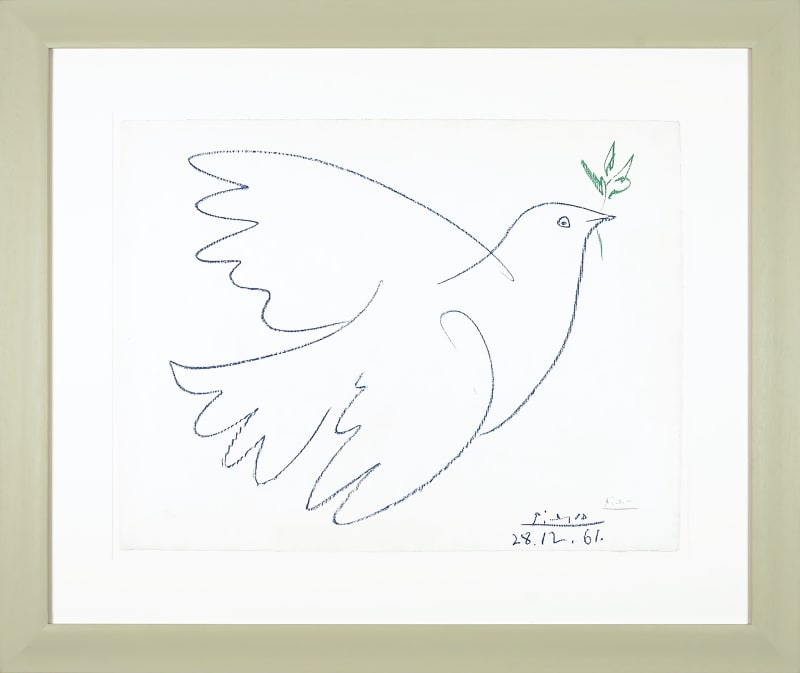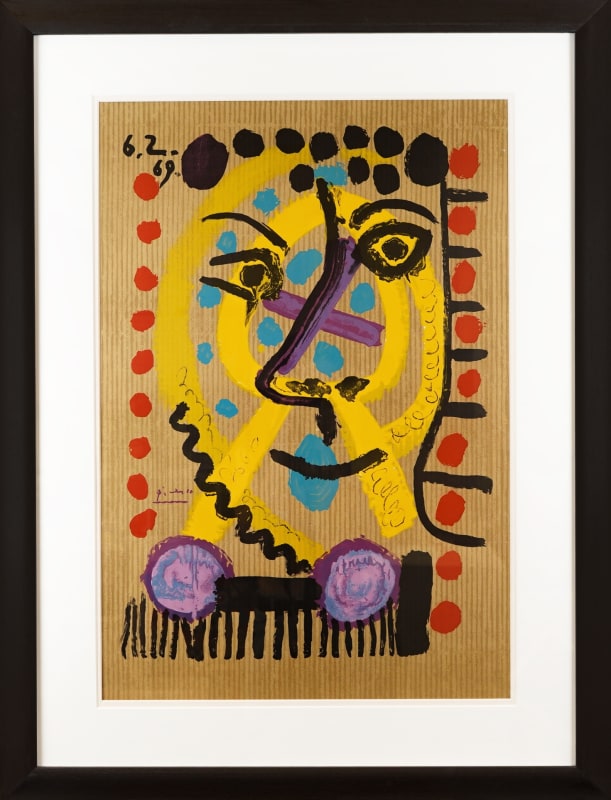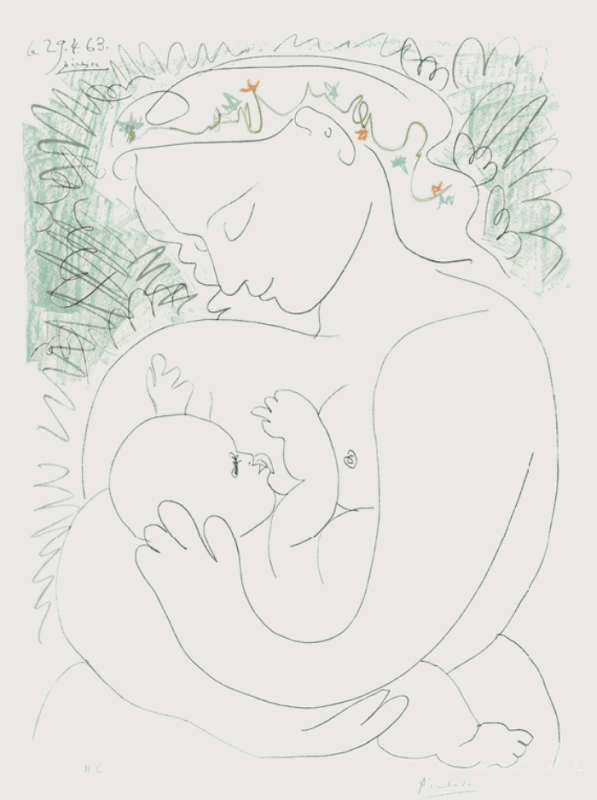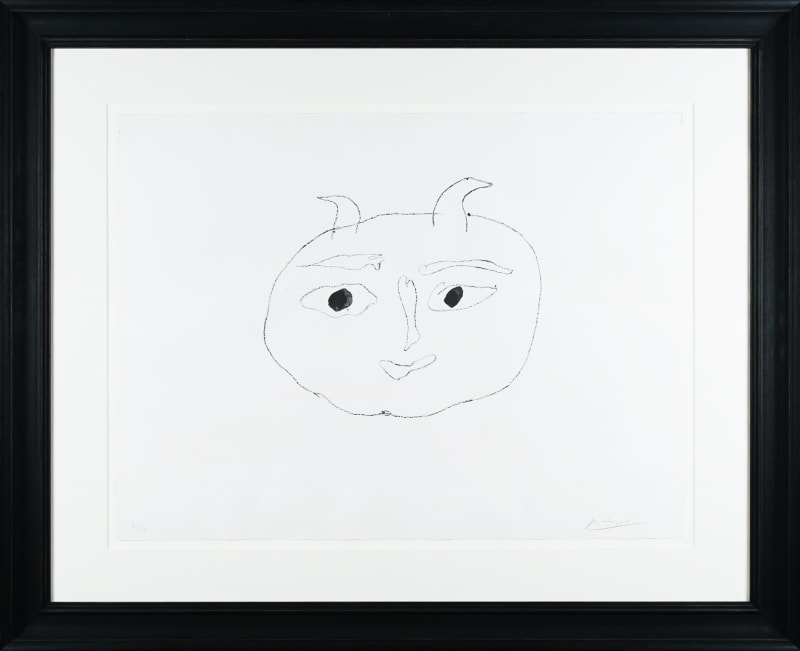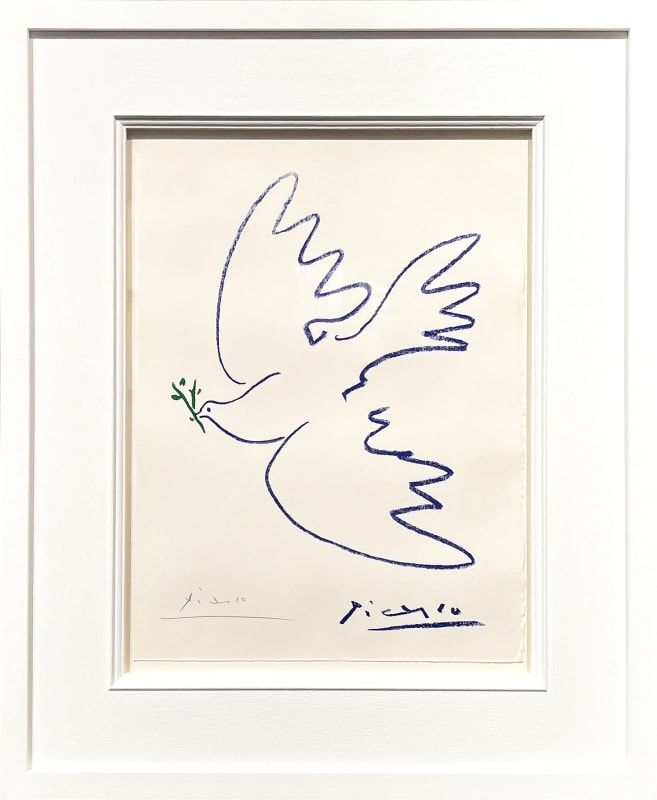As a boy growing up as a teen in the 1970’s there were no shortage of colourful characters to draw inspiration from. It was a time of glam rock and psychedelia, coming out of the swinging sixties and with the shadow of the privations of the Second World War receding into memory.
To an arty kid the pop artists of the 60’s had had their day and whilst fellow Bradfordian David Hockney was making waves in L.A it was Pablo Picasso that held my attention. He seemed impossibly glamourous, being feted by movie stars and celebrities across the world and his work was endlessly varied, fascinating and always so confidently accomplished.
As I became an adult there was rarely a time without a Picasso poster on my wall but I would never have imagined that one day I could own a work that had been in his hands. Over the last few years, we have had an amazing selection of works by the great man and even today I never fail to get a frisson of excitement when we bring new pieces into our collection. Most exciting of all is though is when I recognise the look in a new clients eyes that resonates with how I felt on first realising a genuine Picasso work was within my grasp. This is the life blood of Hidden, we all love sharing our passion for this work and so it is natural that as we celebrate 50 years since his passing that we take a moment to offer our own small tribute.
Any questions? We are happy to help. Call: 0117 279 6402 or send us a message now.
Pablo Picasso, Colombe de la Paix, 1961
This lithograph was created to adorn a poster advertising the 1962 Congress for the National Peace Movement in Paris. One of Picasso's most celebrated designs, the image was issued without text in a signed edition of 200 on Arches paper and a deluxe signed edition of only 30 on Japan nacré paper. This deluxe edition hardly ever comes up for sale and this is the first time we've ever been able to acquire one. It only took nine years! A desirable image in a tiny edition size, this print would be the jewel in any collection. No portfolio of work by Picasso is complete without it.
The Dove of Peace is arguably the most iconic and globally recognised image from Picasso's entire output, but despite its starring role in 20th century art hand-signed examples are rare. The artist created his first variation on the subject in 1949 when commissioned to design a poster for the International Peace Congress in Paris. He had recently created a lithographic portrait of a pigeon that had been presented to him by Henri Matisse and the image was immediately selected for the conference. He returned to the theme again and again, even naming his daughter Paloma, the Spanish word for 'dove'.
Pablo Picasso, Portrait Imaginaire 6.2.69, 1969
Picasso spent his career challenging conservative outlooks on art, rebelling against traditional values and championing freedom of expression over constricting, formal teaching. Aged 87, the artist feared growing stale in the face of a fast-advancing art world. His ‘Portraits Imaginaires’ grew from this inexhaustible desire to continue revolutionising.
At his studio in Mougins, the artist worked on any materials he had to hand, which included the thick paper and corrugated cardboard that his art materials would arrive in. The portraits he created are sometimes recognisable, as he depicts titans such as Shakespeare, Remembrandt and Balzac. In other instances, his faces are abstracted beyond recognition. Picasso created a total of 29 portraits in his ‘Portraits Imaginaires’ series.
Pablo Picasso, Grand Maternité, 1963
Images of maternity and motherhood constitute one of the defining visual narratives in Western art. Older than painting itself and a theme of universal psychological resonance, it can unpick the full spectrum of human emotion, a fact that Picasso embraced from his earliest days as an artist. He was to cast the Mother and Child in an extraordinary array of roles. The threadbare grace and sadness of the mother figure in his Blue Period dissolves into the tender warmth of the Rose Period Saltimbanques. During the 1920s and 30s, his sunlit, neoclassical tributes to the happiness and dignity of motherhood were gradually torn, twisted and blackened into the grief-stricken iconography of Guernica, the defining anti-war image of the century.
Picasso’s post-War treatment of the subject radiates joy, peace and contentment. These depictions of maternity offer an image of redemption for a secular world, a pathway back to innocence. This lithograph was created for the World Peace Movement, one of many artworks that he donated in the name of global harmony and goodwill during the 1960s. Smiling and garlanded with flowers, the Mother in this late print is the personification of hope. She stands as one of Picasso’s most beloved and iconic images.
Pablo Picasso, Toros en Vallauris, 1957
Picasso's first oil painting, produced when he was only nine years old, depicted a scene from the bullfight. The national sport was to assume a lasting importance in his work for the rest of his life. A subject full of artistic possibilities, its meaning shifted continuously and served as a metaphor for many different forms of human drama. The artist produced this poster for the arena in Vallauris, his home between 1948 and 1955.
Linocuts form a relatively small part of his graphic output but capture some of his most innovative techniques. Restless and impatient, Picasso grew tired of waiting several days at a time for his printing plates to be shipped back and forth from the studios in Paris. The linocut technique allowed him to create luminous, joyful images at a local workshop with a minimum of delay.
Pablo Picasso, Deuxième affiche Vallauris , 1948
A design for the second of three posters that Picasso produced for an exhibition of ceramics in Vallauris in 1948. The artist had recently moved to this small scenic town on the Côte d’Azur from Paris, and threw himself into local life. After the darkness of the war years his work was reborn in the Mediterranean light and landscape. Mythological subjects recur throughout his career and the virile, masculine faun often served as an alter ego. Printed in an edition of 50 (half in black, half in ochre), plus 6 AP.
Pablo Picasso, Colombe de Paix for 'Pour un nouveau printemps'', 1963
Picasso's Dove of Peace became the archetypal image of harmony in the 20th century. Rising from the debris of war-ravaged Europe in 1949 it captured his imagination for nearly twenty years and became the emblem of peace movements worldwide. No collection of work by Picasso is complete without one. Found here in its simplest and purest form, this lithograph was created to accompany the handmade book ‘For a New Spring’, published in 1963
The book has a unique handmade cover of raffia and leather, with text by André Verdet. It is signed by the author and accompanied by a stunning loose photograph of Picasso by André Villers, with the photographer's stamp on the back. This example is one of the few non-commercial copies published alongside the numbered edition of 79.
Any questions? We are happy to help. Call: 0117 279 6402 or send us a message now.
Cover photo: Pablo Picasso, Paris, 1948 - Credit: Herbert List (1903-75)

